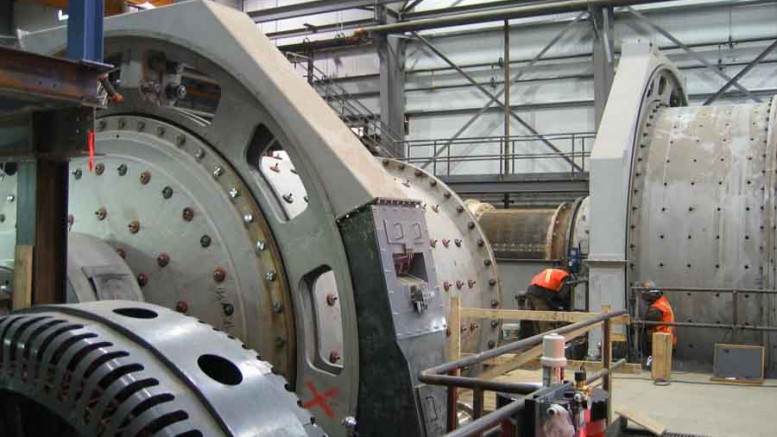VANCOUVER — Depressed equity markets, a cool spring that kept snow on the ground and floods in June that washed out major roads meant 2012 was much quieter in the Yukon than it was in 2011.
In spite of those challenges, explorers worked on more than 80 projects in the territory. At 32 of those projects companies poured more than $1 million into the ground, boosting overall exploration spending for the year to $146 million. That is far less than the $300 million spent in 2011, but roughly equal to 2010’s $160 million.
Another illustration of the year-over-year difference in the Yukon is in the number of claims staked. In 2011, staking activity in the Yukon hit a record high, with 110,442 claims staked. In 2012, volumes dropped by 90% to just 11,339. However, the number of claims in good standing remained high, suggesting that companies used the year to evaluate their land positions.
Capstone Mining’s (CS-T) Minto mine remains the Yukon’s largest operation, with over 1 million tonnes of ore processed in the first nine months of the year to produce 27 million lb. copper, 141,000 oz. silver and 11,800 oz. gold. The Main pit at Minto is now exhausted, but resources at the site are far from spent: open-pit mining is underway in Area 2, one of six additional deposits. Capstone grew two of these deposits in 2012, more than compensating for the ore mined during the year.
Alexco Resource (AXR-T, AXU-X) produced 2.15 million oz. silver, 18.2 million lb. lead and 5.7 million lb. zinc from its Bellekeno mine in 2012. The company also rehabilitated the old underground workings at two ancillary areas on the property while outlining new resources at two other targets, one of which produced stellar intercepts, such as 1,705 grams silver per tonne, 0.46 gram gold per tonne, 6.07% lead and 10.01% zinc over 4.5 metres.
The third operating mine in the Yukon is Wolverine, an underground polymetallic operation owned by private company Yukon Zinc. The mine entered commercial production in late 2011, and reached 80% of its 1,700-tonne-per-day capacity in 2012.
North American Tungsten’s (NTC-V) Cantung operation is the fourth and final operating hardrock mine in the territory. Cantung churned out 273,000 tonnes of tungsten oxide in fiscal 2012.
Four Yukon projects are in the permitting phase: Golden Predator is working to restart the historic Brewery Creek gold mine, Victoria Gold (VIT-C) completed a feasibility study on its 4.8 million oz. Eagle gold project, North American Tungsten moved its Mactung project past several permitting milestones and Veris Gold (VG-T) aims to restart the historic Ketza River mine.
On the exploration front gold was the primary target, and two areas saw particular interest: the Selwyn basin in the central Yukon and the White Gold and Dawson Range region in the west of the territory.
Exploration in Selwyn is in its early stages, and the basin has seen considerable mapping, prospecting, sampling and trenching. The most advanced property in the area is ATAC Resources’ (ATC-V) Rackla project, the Carlin-style gold discovery that sparked the Selwyn basin gold exploration rush. This was a few years ago, but ATAC continues to find gold at Rackla. This year the company focused a $19-million exploration program on the Conrad zone, producing a best intercept of 18.44 grams gold over 43 metres.
Ryan Gold (RYG-V) was also at work in the Selwyn basin, though its Ida Oro property hosts intrusion-related gold rather than Carlin-style mineralization. Twenty-eight drill holes produced best results of 7.01 grams gold over 8.8 metres and 2.04 grams gold over 51 metres.
Drilling at Northern Tiger Resources’ (NTR-V) 3Ace property 200 km southeast returned several intercepts bearing visible gold. Credit for the original discovery of gold at 3Ace goes to Alex McMillan, who was recognized as Prospector of the Year by the Yukon Prospectors’ Association in 2012.
Over in the Dawson Range, Kaminak Gold (KAM-V) advanced its Coffee property. A drill program including 125 diamond and 223 reverse-circulation holes connected several disparate zones, while metallurgical studies showed that heap-leaching extracts more than 90% of the gold from Coffee’s rocks. Late in 2012 Kaminak released a maiden resource estimate for Coffee that pegged the gold count at 3.2 million oz. gold.
Comstock Metals (CSL-V) hit into a new discovery in the district that caused excitement in 2012 when the company found oxidized pyrite in quartz veins at its QV claims. Subsequent drilling returned such intercepts as 2.03 grams gold over 30 metres and 9.98 grams gold over 3.4 metres.
Many other companies drilled, trenched and prospected in the Yukon in 2012, proving the Yukon gold rush that started a few years ago isn’t dead — it has simply slowed to a sustainable pace.


Be the first to comment on "Yukon exploration slow but steady in 2012"